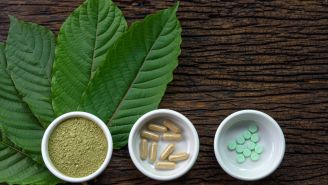Updated on July 25, 2024.
Snack cakes, chips, and ready-to-heat meals are convenient, cheap—and often pretty tasty, too. But if ultra-processed foods are part of your regular diet, you could be setting the table for serious health issues.
Foods that are highly processed are often overloaded with salt (sodium) and sugar, major factors in the development of conditions like heart disease, says Chi-Gang Yen, MD, an interventional cardiologist at St. Mark's Hospital in Salt Lake City, Utah.
In fact:
- About 70 percent of the sodium Americans eat comes from packaged and prepared foods, according to the Centers for Disease Control and Prevention (CDC).
- Ultra-processed foods account for more than half of the calories in our diets. Sugars in these foods don’t occur naturally but are added to foods during manufacturing.
- Ultra-processed foods tend to be low in fiber—so they don’t fill you up—and made with intense artificial flavors designed to entice consumers. As a result, people may eat more of these foods even when they’re not hungry.
So, what exactly makes a food ultra-processed? How can eating too many ultra-processed foods affect your physical and mental health? And what steps can you take to limit them in your diet?
What are ultra-processed foods?
To some extent, most purchased food is processed. Minimally processed foods aren’t significantly altered from their natural states. They include items like chopped fresh tomatoes, canned beans, and frozen berries.
Ultra-processed foods, on the other hand, often have a long list of tongue-twisting ingredients you wouldn’t usually find in a home kitchen. These include dyes, artificial flavors, preservatives, and ingredients to improve texture and extend shelf life. Salt and sugar are also commonly added for taste or preservation. Ultra-processed foods are generally inexpensive, ready-to-eat or easy to prepare, and are typically designed to keep for a long time on pantry shelves or in the fridge or freezer.
Popular ultra-processed foods include:
- Sugary soft drinks
- Frozen meals
- Chicken nuggets or fish sticks
- Frozen pizza
- Powdered noodle soups
- Candies, cookies, and packaged snack cakes
- Packaged bread and rolls
These foods are frequently low in fiber and high in saturated fat, too. The good news is that food companies are now banned from adding artery-clogging artificial trans fats to food. The ban went into effect in June 2018, and all products were expected to be free of trans fats by 2021.
It’s important to note, however, that the U.S. Food and Drug Administration (FDA) allows foods with less than 0.5 grams (g) of trans fats per serving to display 0g on labels, meaning your favorite snacks may not be entirely free of the substance. To avoid trans fats until the phase-out is complete, look for and avoid "partially hydrogenated oil" in food ingredient lists.
Ultra-processed foods and your physical health
A steady diet of ultra-processed foods can raise your risk of high blood pressure, type 2 diabetes, cardiovascular disease, and many other health issues. Heavy consumption is also one of the primary drivers of the obesity epidemic in the United States and around the world. It may increase your chances of developing certain cancers, including colorectal, breast, and ovarian cancer, as well.
For instance, people who regularly eat processed meats like bacon and hot dogs have a significantly higher risk of developing colorectal cancer. In 2015, the World Health Organization estimated that each 50g of processed meat eaten daily would raise the risk of colorectal cancer by 18 percent. That’s equal to four strips of bacon or one hot dog each day.
That’s not all. A study published in JAMA Internal Medicine in 2019 suggested that ultra-processed foods are linked to a higher risk of dying from any cause. Researchers in France followed more than 44,000 adults over a seven-year period. They calculated that each 10 percent increase in the amount of ultra-processed foods eaten was linked to a 14 percent increase in all-cause mortality risk. Socio-economic gaps seemed to influence people’s diet choices; those who tended to live alone and had lower incomes and education levels ate the most ultra-processed food.
Ultra-processed foods and your mental health
Your food choices can also affect your mental health and emotions. For example, a 2023 study of about 31,000 middle-aged women found that eating ultra-processed foods was tied to depression. People who ate the most ultra-processed items had a 50 percent higher risk of developing the mental health issue than those who ate the least. If the foods and drinks contained artificial sweeteners—like diet soda—the link was especially strong. The findings were published in JAMA Network Open.
“Our brains, our moods and our bodies tell us when we’re not eating right and we don’t feel good,” explains Yen. He points out that, among other issues, constant energy highs and subsequent crashes from sugary foods could change brain chemistry and lead to more low moods and depression.
It may also have to do with the gut microbiome, a collection of trillions of microbes that live in your digestive system. The microbiome plays a role in managing systems and functions throughout your body, including the regulation of mental health. Many experts believe that eating too many ultra-processed foods may lead the microbiome to become unbalanced. This, in turn, may lead to a higher risk of mental health issues like depression and anxiety.
How to eat less processed food
Start with preparing meals in your own kitchen. Control sugar, salt, and fat in your diet by cooking at home using fruit, vegetables, legumes, lean proteins, and whole grains. It may take more time, but it’s worth the extra effort. Try these tips:
- Plan your meals. Use your days off to map out a menu for the week. Make a list of all the healthy ingredients you’ll need.
- Shop smart. Try to stick to the outer aisles of the grocery store. That’s where the fresh produce, dairy, meats, and seafood are typically located. If a fresh veggie or fruit isn’t available, frozen is a good option. Pick items without sauce or added ingredients such as sugars or artificial coloring.
- Pick a day to cook. If weeknights are hectic, use a weekend to "make ahead." Whip up healthy stews, soups, and chilis and freeze family-sized or individual portions. Ask school-aged kids to help with prep. This will get healthy eating habits established early.
- Pack healthy snacks. Bring bananas, apple slices, nuts, or other good-for-you items to work. This can help you avoid those diet-sabotaging 3pm snack machine visits.
Be a food label sleuth, too. Eating processed foods occasionally is fine, says Yen, but moderation is key. Read labels and choose items with the fewest ingredients. Also check for added sugars. There are more than 60 different names, and they might appear as:
- Maltose, sucrose, fructose, or dextrose
- High-fructose corn syrup, corn syrup, or rice syrup
- Fruit juice concentrate
- Raw sugar or brown sugar
- Agave
- Molasses
The government’s 2020-2025 Dietary Guidelines for Americans advises we limit added sugar calories to 10 percent of our daily diet. For someone who eats 2,000 calories, that’s about 200 calories, 12 teaspoons or 1/4 cup per day. One effective way to cut that sugar is to avoid sugary sodas and other drinks. For instance, orange soda and cranberry juice cocktail each have more than 10 teaspoons of sugar in a 12-ounce serving.
Keep an eye out for sodium, too. Most Americans consume 3,400 milligrams (mg) or more each day—without realizing it. We should get 2,300mg or less, according to the Dietary Guidelines. Your doctor may suggest cutting back even more if you have health problems like high blood pressure.
To reduce your intake, check labels for the amount of sodium per serving. For instance, if there’s 680mg in a cup of chicken noodle soup, you’re getting almost 30 percent of your daily allowance right there. Look for items labeled "sodium-free," "very low sodium," or "low sodium" to scale down your salt intake overall.
Ultimately, says Yen, you make an investment in yourself when you change your diet for the better. There’s no better time to start than now.







